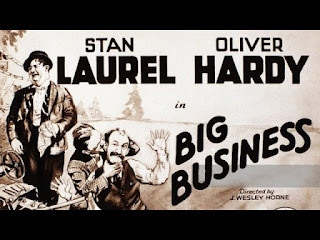Pandora's Box (1929)
.jpg)
Before I even attempt to describe this 1929 silent German film, it's worth noting this movie is - in my opinion at least - bonkers in ways no movie with synchronized sound I've encountered approaches. The plot seems to be largely pulled from its source material, a pair of plays by Frank Wedekind detailing the life and death of Lulu, a fictional woman whose sexual charisma and liberality seem to bring about destruction. What makes this more than garden-variety misogyny is the fact that while Lulu certainly isn't blameless, virtually every turning point leading to a character's death, destitution, or corruption is instigated by a male character. The film examines the way society blames women for roles it forces upon them. It's not really Lulu who's responsible for the majority of what occurs, but rather those around her. Or at least that's my interpretation. I find silent pictures harder to analyze than the talkies we're all more familiar with due to the i...

.jpg)
.jpg)
.jpg)
.jpg)

.jpg)
.jpg)
.jpg)
.jpg)
.jpg)